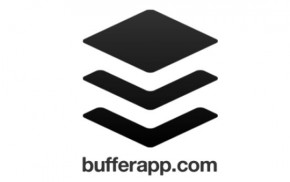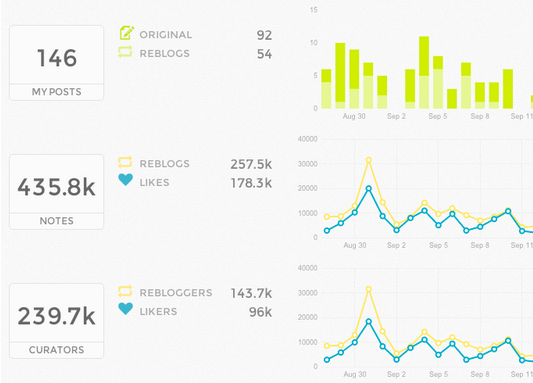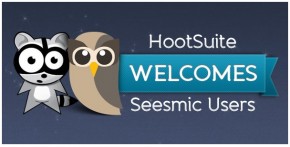 My two cents on the recent Inc article titled, “Why Gary Vaynerchuk Is Flat Out Wrong ” written by Michael Schein.
My two cents on the recent Inc article titled, “Why Gary Vaynerchuk Is Flat Out Wrong ” written by Michael Schein.
Also, to the right, an amazing pic of Gary and I together.
Seriously, how can you not have TONS of love for Gary Vee!?
 My two cents on the recent Inc article titled, “Why Gary Vaynerchuk Is Flat Out Wrong ” written by Michael Schein.
My two cents on the recent Inc article titled, “Why Gary Vaynerchuk Is Flat Out Wrong ” written by Michael Schein.
Also, to the right, an amazing pic of Gary and I together.
Seriously, how can you not have TONS of love for Gary Vee!?
 Twitter has established itself as the go-to place for what’s happening now—whether it’s breaking news or what your friends had for breakfast. We’ve talked before about some organic ways to become part of the conversation, whether you’re marketing a made-for-tv movie or trying to find twitter influencers. Twitter itself offers another option: Promoted Tweets.
Twitter has established itself as the go-to place for what’s happening now—whether it’s breaking news or what your friends had for breakfast. We’ve talked before about some organic ways to become part of the conversation, whether you’re marketing a made-for-tv movie or trying to find twitter influencers. Twitter itself offers another option: Promoted Tweets.
Promoted Tweets are the native advertising platform for twitter: a way for you to get your message out there in the normal twitter format that increases the exposure of your tweets beyond your normal twitter followers. You’ve probably noticed these in your own twitter feed: they appear up at the top of your feed sometimes, and if you’re searching for certain kinds of tweets, you’ll notice them early on in the twitter search results.
This kind of exposure can be incredibly useful for your business if you know what you’re doing. Twitter identifies two main goals for your tweets: driving awareness for your business and driving a particular action via twitter. Articulating your goals for the specific twitter campaign is essential. It lets you determine whether the campaign has been successful for you, whatever those goals might be.
 Yesterday, we talked about how well the SyFy movie Sharknado used social media to deliver ratings. A powerful social media strategy involves more than just keeping your twitter feed updated regularly. Content, of course, plays an important role, but just as important is making sure that your message reaches the right audience. Having a broad message designed to reach a large group of people should always be a part of your strategy, but we all know that people are more likely to listen to people they trust. So it makes sense to target people who command a lot of influence with their peers.
Yesterday, we talked about how well the SyFy movie Sharknado used social media to deliver ratings. A powerful social media strategy involves more than just keeping your twitter feed updated regularly. Content, of course, plays an important role, but just as important is making sure that your message reaches the right audience. Having a broad message designed to reach a large group of people should always be a part of your strategy, but we all know that people are more likely to listen to people they trust. So it makes sense to target people who command a lot of influence with their peers.
Marketing theory calls these people, unsurprisingly, “influencers”—people with a lot of clout over other folks’ decisions. If you can tailor your messaging specifically for them, it’s more likely that they’ll pick it up and transmit it through their own networks. And with all the social networks springing up on the internet, it can be easier than ever to figure out who matters most to a community. The flip side of this is that there are so many communities and so many networks, it can all seem overwhelming.
So we’re here to help. Identifying influencers is as much art as science. But there’s a method to the madness to help you find the folks that matter the most.
Step One: Make sure you understand your target audience Read More
 The biggest thing to hit Twitter last month (beating even certain scandalous selfies) was the SyFy made-for-TV movie ‘Sharknado’. If you’re not up on the latest in intentionally ridiculous movies, I’ll let Wikipedia explain it: “‘Sharknado’ is a 2013 made-for-television disaster film about a waterspout that lifts sharks out of the ocean and deposits them in Los Angeles.” Silly–and silly on purpose–something about it captured the imagination of the Twitterverse, and by the time the movie was playing, twitter mentions hit a peak of 5,000 tweets per minute.
The biggest thing to hit Twitter last month (beating even certain scandalous selfies) was the SyFy made-for-TV movie ‘Sharknado’. If you’re not up on the latest in intentionally ridiculous movies, I’ll let Wikipedia explain it: “‘Sharknado’ is a 2013 made-for-television disaster film about a waterspout that lifts sharks out of the ocean and deposits them in Los Angeles.” Silly–and silly on purpose–something about it captured the imagination of the Twitterverse, and by the time the movie was playing, twitter mentions hit a peak of 5,000 tweets per minute.
‘Sharknado’ was such a phenomenon that the official Twitter blog wrote a really interesting piece on how it happened. It’s a must-read if you’re interested in how twitter trends hit critical mass and how major influencers (and smart companies) can really drive a conversation.
But when the ratings came out the day after the premier, it turned out that just over a million people watched, ratings even lower than the average SyFy movie, none of which had ever come close to generating the same buzz as that twitter hit. News outlets–which covered the twitter phenomenon before the movie aired–sounded like they were gloating, with headlines like “Sorry Twitter: ‘Sharknado’ Was An Enormous Ratings Bust”, and “Sharknado ratings: Lot of wind, little bite.”
It looked like the ‘Sharknado’ team did everything right when it came to building a brand online. They connected to the right people, they maintained a strong presence, and they kept engaged with a core group of followers. So it makes sense that people started wondering whether social media buzz was worth anything if it couldn’t turn trending hashtags into ratings. Read More
 It’s 2013, and by now most of us know that a powerful social media presence is essential to building your brand on the internet. To make that responsibility a little easier, a number of social media management applications have emerged to coordinate your presence through time and across social media platforms.
It’s 2013, and by now most of us know that a powerful social media presence is essential to building your brand on the internet. To make that responsibility a little easier, a number of social media management applications have emerged to coordinate your presence through time and across social media platforms.
One of the applications that seems to be picking up a lot of steam is Buffer, an application that started life managing twitter feeds but has expanded its focus to include Facebook, LinkedIn, and many other platforms and features.
The basic idea behind social media management software is that you’re able to make updates to your various social media accounts in a single convenient location. And best of all, you’re able to schedule your updates so you’re able to prepare your posts and tweets beforehand. Most applications also offer various analytics to determine your social media impact and help you to refine your strategies for maximum reach.
In this respect, Buffer behaves a lot like its competitors, which include HootSuite, perhaps the most popular of these applications, and others such as TweetDeck, and SocialFlow.
Buffer really distinguishes itself when it comes to ease of use. The scheduler is often singled out for approval: you’re able to set up default posting times so you don’t have to specify for each new post, which is the case for most other social media management software. This is especially useful as you can schedule your posts to correspond to peak usage time for each different networks, set it, and forget it.
Besides scheduling posts, generating and sharing content online is also a snap. Buffer provides you with browser extensions for Chrome, Firefox, and Safari to make sharing content from the web a snap. Just find something you like, click on the Buffer button in your browser, and you’re all set to either share immediately or to put it in your buffer and share at your previously scheduled times. Read More
 There was more social media traffic around the first presidential debate between former Governor Mitt Romney and President Barack Obama than there was around the vice-presidential debate. But while the quantity may have been lower, the quality of the humor (Big Bird not withstanding) appears to be higher surrounding Rep. Paul Ryan and Vice President Joe Biden.
There was more social media traffic around the first presidential debate between former Governor Mitt Romney and President Barack Obama than there was around the vice-presidential debate. But while the quantity may have been lower, the quality of the humor (Big Bird not withstanding) appears to be higher surrounding Rep. Paul Ryan and Vice President Joe Biden.
The social media reaction to this debate wasn’t quite as big as the last one. Only 3.5 million tweets went out during the VP debate, compared to 10.5 million for the presidential one last week.
Over on Google, search terms around Joe Biden included ‘laughing’ and ‘malarkey.’ The latter was a term Biden used to describe the answer Rep. Ryan gave to a question about the Libyan embassy crisis.
Read the rest of this post and check out more election coverage over at HLNtv.com!

Social network and microblogging platform Tumblr has recently announced a few new features that should make it even more attractive to marketers, including analytics to let brands look at how well their messages resonate on Tumblr.
By all measures, the service is incredibly popular. It hosts over almost 70 million blogs, and receives billions of views each month. Almost 50% of its users are under 25, making the service an especially appealing platform for marketers looking to reach the coveted 18 – 25 year old demographic. Plus it’s the kind of service that’s addictive: interactions with other users take place within the site’s “dashboard,” and it’s really heavy on video, visual and joke content. In other words, it’s fun.
If you haven’t used it, the big thing that sets it apart is the “Reblog.” Basically, with one push of a button you can copy the content of someone else to your own blog, and then comment on it if you want. Until now, there was no way for a brand to really measure the reach of all those reblogs or likes (the other key way of interacting with a post). That’s like not being able to measure the impact of retweets on Twitter, or shares on Facebook, and it was a real problem for marketers.

I recently had the chance to chair a phenomenal panel in New York City where I was able to talk with a wide variety of entrepreneurs, business professionals, and social media experts about where we are today with mobile and social media and what’s coming in the future. While this event wasn’t televised, I was able to get some great quotes and invaluable content from the panelists to share with you today.
The most interesting panelist had to be Backstreet Boy AJ McLean, who has a major social presence on Twitter, Socialcam and Instagram. Using social media, AJ has created Internet memes like #booomb videos on Socialcam, and has cultivated a huge online audience almost 20 years after the band he was originally known for rose to fame.
While the Backstreet Boys are still recording and selling millions of albums, AJ has created a strong brand for himself as Mr. Skulleeroz (pronounced “Skull-e-rose”) on social media channels. What’s his secret? According to AJ:
Someone like myself who’s in the music industry, we’re not always that accessible to our fans and to the media except when we do [things like] a press event. [With social media you] get a direct contact and get an immediate response. That’s something that I’ve never seen before… It just brings my fans, my personal fans and the Backstreet Boys fans, closer to us as people. Bringing them into our homes, our everyday life. Not just backstage or onstage, but like ‘come take a ride with me down the street to the 7-11.
You don’t have to be a Backstreet Boy to see the value in what AJ is saying. No matter what your business or brand, social media and video allow you to connect with people when you can’t be there in person. If you can get even a few hundred views on an online video, the time you take to make it is immediately more valuable than trying to meet with those same hundred people in person. If you can get a few thousand views, you’re suddenly an online content producer capable of monetizing your content because your online audience is now suddenly as valuable as your real-world audience.

I predict companies who don’t have social media management platforms will be like companies today who don’t have a telephone system.
Yesterday we talked about how HootSuite has acquired Seesmic to reach even more business customers. We also got a chance to talk with Ryan Holmes, CEO of HootSuite, about his thoughts about where social media is going, how its going to impact businesses, and what small business owners can do to be prepared.
Dave Olson, HootSuite’s VP of Community, put together the following social media tips for small business users looking to build their social following:
· When it comes to social media strategy, amplification is key. Make sure you tap the right channels during an optimal time of day. For example, restaurants may benefit from Tweeting daily specials at lunch time. Timing is crucial! The best time to send messages is on Tuesday, Wednesday and Thursday. Monday is a catch up day and Friday is too close to the weekend, so try your best to avoid those days. Also, you will get the most traffic by scheduling your messaging according to Eastern Standard Time.
· Social messaging should be tailored to each audience: short, succinct and catchy messages are appropriate for Twitter, longer, more detailed posts work for Facebook and Google+.
 Managing social media has become a huge part of every business’s marketing plan, and helping companies manage those social accounts has become a big business in itself. Case in point: HootSuite announced today that it has acquired Seesmic to grow its customer base of business users.
Managing social media has become a huge part of every business’s marketing plan, and helping companies manage those social accounts has become a big business in itself. Case in point: HootSuite announced today that it has acquired Seesmic to grow its customer base of business users.
In case you’ve never used either, both HootSuite and Seesmic were competitors in the same space: providing social media tools to businesses, from the very to small to the Fortune 500. Both allow companies to manage all of their social networks from one centralized dashboard, and control and schedule content flow and updates. They also provide real-time tracking measurements to business customers, so that customers can see which messages work best with their audiences. Both services seek to streamline the process for companies with many social accounts and lots of folks using them.
The business model for HootSuite is its paying clients: $9.99 a month for “pro” accounts and a whitelabel enterprise solution for the big guys. In acquiring Seesmic, they’ve taken a customer acquisition shortcut: Seesmic has its own base of paying business customers that HootSuite is hoping will come on over and join their 5 million users.
But Seesmic also had lots of non-business customers, and HootSuite doesn’t necessarily want those folks. Those consumers will be directed back to using the native Twitter experience, including Tweetdeck, which Twitter purchased over a year ago. This is pretty squarely inline with Twitter’s recently-announced policy that they don’t want third parties creating applications for consumers. Twitter wants to own the consumer experience, but is OK with organizations like HootSuite creating tools for businesses to leverage Twitter further.
Curious how Twitter’s moves may affect your small business, or about how an application like HootSuite can help your small business? Stay tuned for our interview with HootSuite CEO Ryan Holmes!